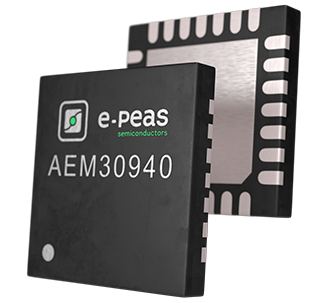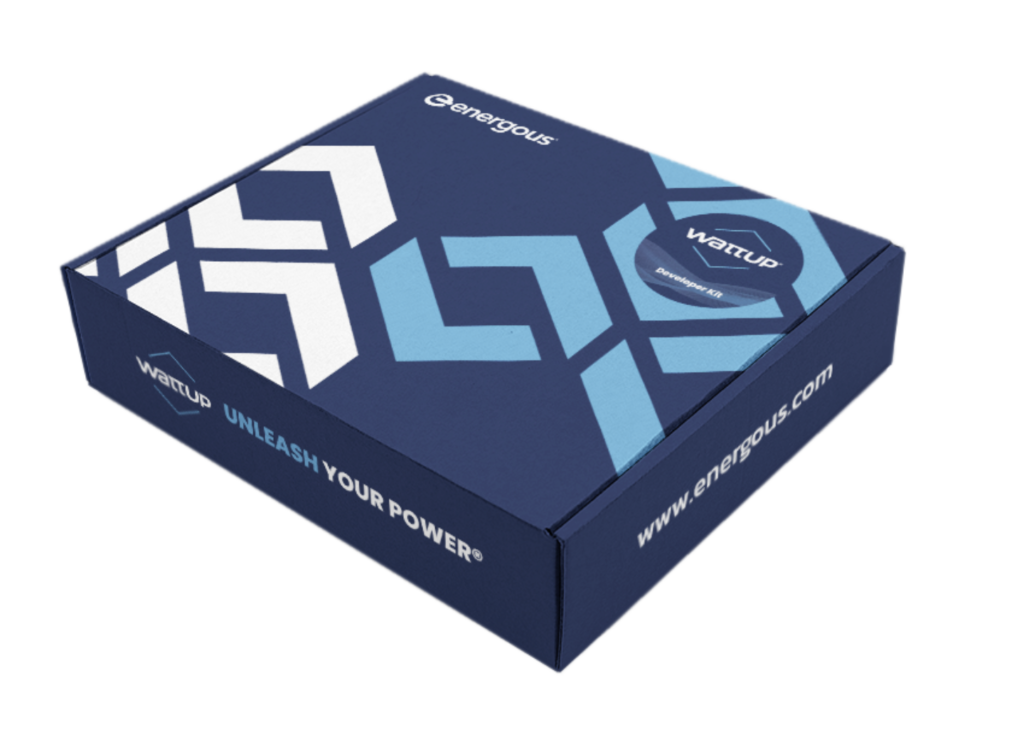In October 2021, Energous introduced the WattUp 1W Active Energy Harvesting Developer Kit, an innovative solution capable of charging multiple IoT devices through at-a-distance wireless charging. This advanced technology is based on the e-peas’ AEM30940.
What Makes the WattUp 1W Kit “Active”?
The kit is termed “active” because it includes a 6-inch transmitter, essentially a power gateway, alongside several IoT devices that harvest energy from it. Unlike traditional passive solutions that harvest ambient energy from the environment unpredictably and often insufficiently, this active solution ensures reliable energy delivery.
Key Components of the WattUp 1W Developer Kit

The developer kit comprises both transmitter and receiver units, leveraging the following primary chips:
Transmitter:
- Dialog Semiconductor DA14682 SmartBond Bluetooth 5.0 Cortex-M0 SoC
- Dialog Semiconductor DA4100 Wireless Power Transmitter SoC
- Dialog Semiconductor DA3210 1W Power Amplifier
- Discrete rectifier and DA2210 WPT rectifier
Receiver(s):
- Dialog Semiconductor DA14531 Cortex-M0+ BLE 5.1 SoC @ 16 MHz with on-board and external antenna
- Optional E-ink display
- e-peas’ AEM30940 RF harvesting PMIC
- Low Voltage Operation: 50mV to 5V
- Cold Start: From 380mV input voltage
- 3x configurable RF input paths including discrete and DA2210 options
- Supercap energy storage device with support for a rechargeable lithium battery
- Ambient light sensor and temperature/humidity sensor
Additional Features
The kit also includes a mobile app for monitoring and controlling the TX/RX units, along with schematics, layout files, antenna design files, and mechanical files. While the company has not specified the exact range, the solution is aimed at smart buildings, industrial IoT sensors, and retail electronic displays, indicating a range greater than just a few centimeters. Both the transmitter and receivers are Bluetooth-enabled, allowing data retrieval from the receiver’s sensors through the transmitter.



The developer kit is apparently not designed for the hobbyist wanting to experiment with wireless charging in his/her garage, but it’s made for companies that “are looking at taking wireless charging to mass production with a designated product or group of products”, and an NDA must be signed to be able to discuss the project details like power requirements. The press release also mentions “1W of conducted power in a specific area or direction”, so the antennas arrangement can probably be tweaked, which would explain why we are not given a specific charging range. More details can be found on the Energous developer kits page, where you’ll also notice a 5.5W active energy harvesting developer kit that was announced earlier this year.
Haven’t joined us on LinkedIn yet? Click on the icon below.

 Dual source harvesting
Dual source harvesting 